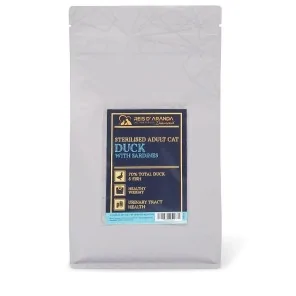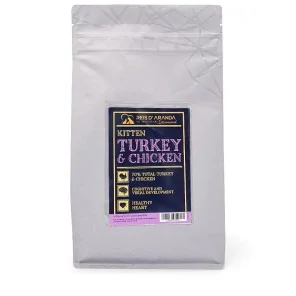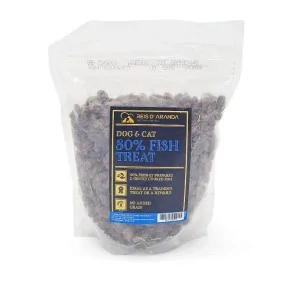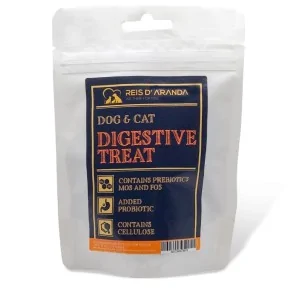Its name says it all: the Vienna blue rabbit comes from Austria. Not only is it beautiful with its shiny blue-grey...
THE BENGAL CAT
INTRODUCTION
The Bengal is a breed of domestic cat developed to resemble exotic wild felines such as leopards, ocelots, margais, etc. The Bengal cat was a result of a cross between a domestic cat and a female leopard cat.
THE ORIGIN OF THE BENGAL CAT
The bengal is a very recent breed. The origin of the breeding of wild hybrid cats can be traced to the United States, where the geneticist Jean Mill carried out, in 1963, the first experiment of crossbreeding between a domestic cat and an Asian leopard cat Prionailurus bengalensis bengalensis, coming from South Asia. The aim was to produce a tame domestic cat breed with the original appearance of its wild cat ancestors.
However, this was not a new idea, as the British journalist and artist Harrison William Weir had already, in 1889, spoken of a cross between an Asiatic leopard cat and a domestic cat. There are also records of Belgian and Japanese publications from 1934 and 1941 concerning similar crosses, although Jean Mill was the major influence on the breeding of the bengal and the official founder of the breed, then known as Jean Sudgen. In 1946 she was working on a research study on crossbreeding for the Genetics course she was teaching at UC Davis in the USA. In the early 1960s she put her ideas and knowledge into practice: she crossed domestic cats with Asian leopard cats. The first generation resulting from a direct cross between a domestic and a wild animal is called F1; the offspring of a new cross between an F1 and a domestic cat is called F2 and so on. F1 and F2 cats often display the fierce behaviour of wild felines. Jean Mill re-crossed the F1 females with the parent and thus obtained F2 cats. After the next two or three generations, the litters were already showing behaviour similar to that of domestic cats. Jean Mill interrupted her experiments for some time, due to the death of her husband, but resumed them around 1970 when she had the opportunity to accept hybrid females from the scientist William Centerwall, who had crossed Asian leopard cats with domestic cats to investigate immunity to feline leukaemia. This was the beginning of modern Bengal cat breeding, officially recognised in 1983 by The International Cat Association (TICA). Initially, they were also crossed with breeds such as the Abyssinian, the Egyptian mau and the American shorthair, in order to define the desired appearance of the Bengal cat. Today, only Bengals are used for breeding, but only those of the fourth generation and upwards (F4) are allowed in shows. From this generation onwards they are considered to be as tame as domestic cats.
Since then, the Bengal has gained a large following and in the meantime, TICA has registered more than 60,000 pure cat breeds. However, not all breeding associations are in favour of hybrid cats, e.g. the Cat Fanciers' Association (CFA) does not recognise any breed descended from wild cats.
WHAT DOES THE BENGAL CAT LOOK LIKE?
COLOUR: All variations of the brown spotted tabby are permitted, although a high level of rufinism (shades of orange) is preferred. The ground colour may be in shades of yellow, beige, golden-grey or orange. The markings may be black or brown or various shades of chocolate or cinnamon. Chin, whisker pads, belly and crotch should have a white or very light ground colour, with a strong contrast of colour between the sides and the back. Mucous membranes of eyes, lips and nose should be outlined in black and the nose should be brick coloured. Pads and tip of tail black.
HEAD: Modified trapezium shape. Broad and rounded, longer than broad. In adult males the jaws should be very broad. The size should be slightly small in proportion to the body.
PROFILE: The forehead forms a gentle curve to the stop, which extends to the upper part of the eyes. Profile slightly concave. Nose broad and large, with slightly swollen nose. Broad muzzle. Large and prominent whisker pads. Cheek bones high and pronounced.
EAR: Small to medium sized, short and broad with rounded tips. Set on symmetrically following the contour of the face. In profile, set forward. Horizontal, light-coloured patches on the back of the ear are acceptable. Linx tipping (long hairs on the tips of the ears) is not desirable.
EYES: Oval in shape, but may be slightly almond shaped. Large. Set wide apart and angulated towards the base of the ear. Colour can be golden or green. Only one variety of snow leopard has blue.
NECK: Thick and muscular (more so in males). Large in proportion to the head. Long in proportion to the body.
BODY: Long and massive, strong but not ‘oriental’ or ‘foreign’ type. Large (though not as large as the largest domestic breed). Robust bone, not delicate. Very muscular, especially in males, which is one of its most outstanding features.
FEET: Of medium length, the hind legs slightly longer than the forelegs. Of thick and strong bone, not at all delicate. Very muscular, like the body.
FEET: Large, round, always with black pads.
TAIL: Thick, tapering progressively towards the tip, which is rounded and always black. Medium to large and of medium length.
COAT: Short to medium length. In kittens a slightly longer coat is permissible. Coat dense, glossy and extraordinarily soft to the touch.
SCORING:
- Drawing, 30.
- Colour, 10.
- Head, 10.
- Ears, 10.
- Eyes, 5.
- Neck, 5.
- Body, 10.
- Legs, 5.
- Feet, 5.
- Coat, 10 points.
PENALTIES: Spots on the body meeting vertically to form the ‘mackerel tabby’ pattern. ‘Locket’, i.e. a white hairy button on the throat. The point is not awarded for the following faults: tip of tail not black; lack of round spots on the belly; pink pads.
HEALTH OF THE BENGAL CAT
As with all cats, you should be sure to go to a serious and responsible breeder to purchase your animal. Bengals are normally healthy animals, but they can suffer from certain hereditary diseases. These are some of them:
- PIRUVATE KINASE DEFICIENCY: This disease causes a lack of the enzyme pyruvate kinase, which is necessary for red blood cells to function normally. This significantly reduces the life span of red blood cells, resulting in a decrease in the number of red blood cells in circulation (anaemia).
- PROGRESSIVE RETINAL ATROPHY (PRA): This disease causes progressive blindness and has no treatment. PRA has been diagnosed in kittens as young as 12 weeks. APR in flares is thought to be caused by a recessive gene.
- FLAT CHEST SYNDROME: This is a malformation that causes a different appearance of the chest and can cause breathing difficulties.
- HIP DISPLASIA: an orthopaedic condition affecting the hip. It causes little or no pain, but in the worst cases can lead to severe lameness.
- HYPERTROPHIC MYOCARDIOPATHY (HCM): This breed has a higher prevalence of HCM than other breeds. This condition causes enlargement of the myocardium and is hereditary.
THE BENGAL CAT'S PEROSNALITY
The Bengal is a very intelligent, active and curious cat. They are fun to live with, but don't forget that they need a lot of attention and entertainment. Because of this, the bengal may not be suitable for everyone, especially for people who have never owned a cat before. But if you have the experience and knowledge to meet the challenge, the bengal is a great cat for the family.
They love to climb, so they need plenty of vertical space. Unlike many cats, they also like to play in water. So don't be surprised if they jump in the bath or shower with you. Because of their high intelligence, they enjoy the attention of clicker training. You can test their brains and pique their interest by teaching them tricks and games and providing them with interactive toys or puzzles with rewards of food or treats when they learn to manipulate them.
With a flare, you will have a confident, talkative and friendly cat that is always on the alert. They are affectionate, love their family members, and will do anything to get your attention. Most bengals get along well with other pets, such as dogs.
CONCLUSION
Bengal cats show self-assurance and self-confidence and are also affectionate. They are very playful by nature and are full of energy. Bengals are smart and watch everything around them, including the family dog, as if to ask: ‘Can I play with this? They are agile, love to climb and can be quite meowy, with a characteristic voice described as a cooing, gurgling or strange raspy sound.
Leave a comment
Log in to post comments
















